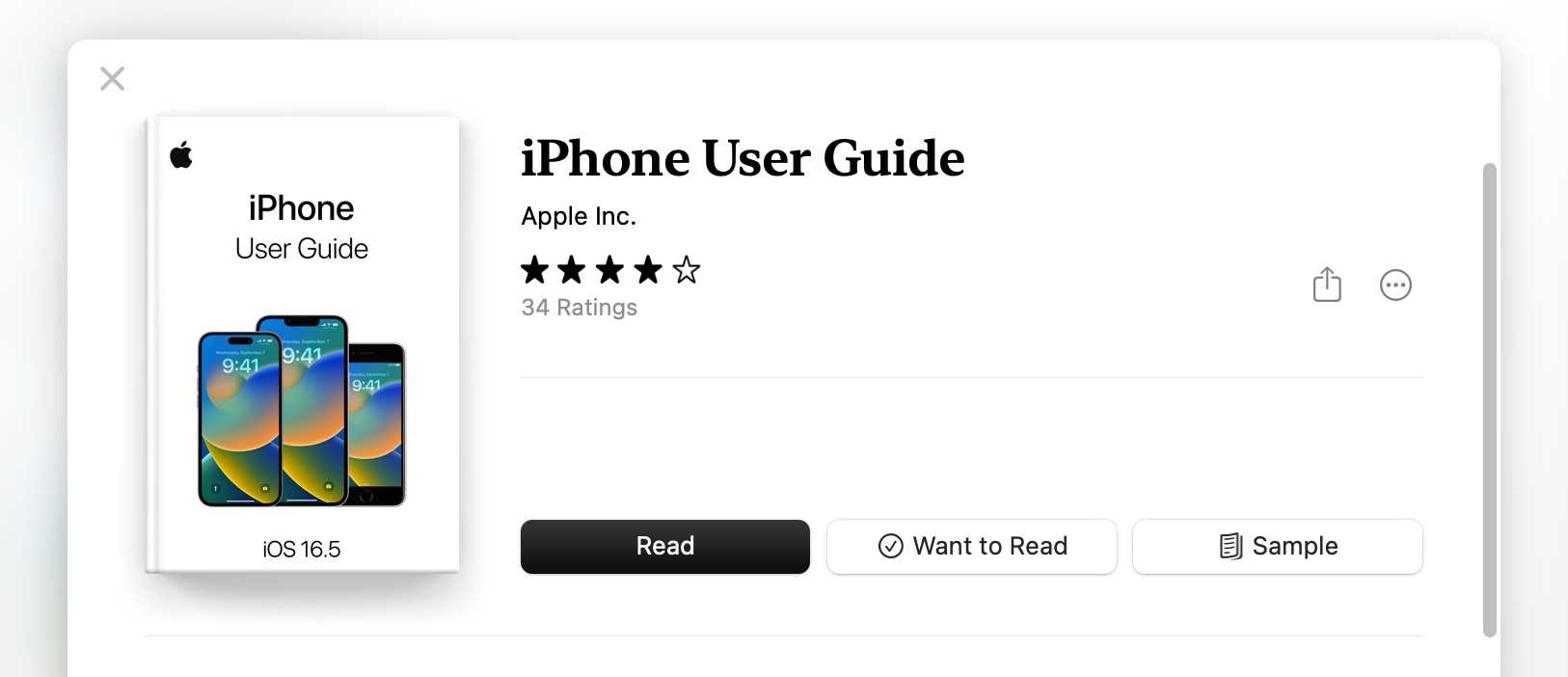In the evolving landscape of user manuals, a significant shift is reshaping the way consumers access information — The transition from traditional paperback manuals to digital alternatives.
In recent years, this transition seems to have been swift and impactful, especially in the tech industry. In this article, we will delve into the reasons behind the rapid decline of paperback user manuals and talk about the implications for users and industries alike.
The Rise of Digital User Manuals
In the era of smartphones and tablets, digital manuals have gained prominence for their accessibility and eco-friendly nature. These digital alternatives provide instant access to information, reducing the need for bulky paperback manuals. Notable companies like Apple and Microsoft have wasted no time in pioneering this trend.
Apple’s transition to online manuals demonstrates the power of instant access and keyword search. In fact, Apple had stopped the distribution of printed user manuals for ages, instead, opting for web, PDF files, and Apple Books.


Imagine needing help with a specific feature on your iPhone. With a paper manual, you’d be flipping through pages for ages. But with a PDF manual or an e-manual, a quick search instantly takes you to the relevant section, saving you some valuable time and frustration.
On the other hand, Microsoft has threaded the same path — Flagship products such as the Xbox Series X are not sold with an instruction manual in the box.
…But why are companies doing this?
We’ve already explored how digital user manuals offer the unparalleled convenience of searching for specific information effortlessly. Indeed, companies are now replacing the days of flipping through pages with user-friendly interfaces in the form of web pages, PDFs, and even native apps. Manufacturing companies have shifted focus on e-manuals for one or more of the following reasons;
1. Environmental Impact
In the age of digital information, bulky paper manuals are taking a back seat to their eco-friendly counterparts – digital manuals. However, the benefits extend beyond convenience and organization. The shift towards digital manuals boasts significant environmental advantages, making it a crucial step towards sustainable practices in various industries. Let’s dive into the ecological impact of this transition:
Eco-Friendly Practices
Reduced Paper Consumption: This is perhaps the most glaring benefit. Imagine the countless trees saved, the gallons of water conserved, and the energy saved throughout the paper production process from printing, transportation, and storage. This directly translates to:
- Less deforestation: Paper production contributes significantly to deforestation, disrupting ecosystems and biodiversity. Digital manuals act as a shield for our forests, safeguarding their vital role in climate regulation and carbon sequestration.
- Water conservation: Papermaking is a water-intensive process. Replacing user manuals with digital alternatives reduces this demand, preserving a precious resource and minimizing wastewater generation.
- Energy efficiency: From powering pulp mills to transporting paper-heavy packaging, the whole cycle of paper production consumes significant energy. Digital manuals minimize this footprint, contributing to lower greenhouse gas emissions and a cleaner environment.
- Ink and toner savings: Printing manuals require ink and toner cartridges, which have their own environmental impacts in production and disposal. Digital manuals eliminate this need, reducing waste and encouraging the conservation of these resources.
Reduced transportation: Physical manuals need to be shipped and distributed, incurring carbon emissions from fuel usage. Digital manuals eliminate the entire need for this, lowering the overall carbon footprint.
Storage optimization: Physical user manuals require physical space for storage, adding to energy consumption for facilities and contributing to clutter. Digital manuals take up virtually no physical space, reducing the environmental impact of storage and organization.
2. Loss or Misplacement
It’s not uncommon for people to misplace or lose the user manuals for their devices shortly after purchase. With the shift towards digital manuals, users have the advantage of easy searchability and accessibility, making it more convenient to retrieve the information they need. Digital manuals often come in various formats, such as PDFs or online documentation, allowing users to quickly find specific information about their devices. This transition has indeed made it easier for users to troubleshoot issues, understand features, and make the most out of their devices.
3. Evolving Consumer Preferences
The static nature of paperback user manuals has become a big limitation. Digital manuals, also known as e-manuals, are free from this limitation by offering the possibility of updating content in real-time. Whether it’s a software upgrade, a product enhancement, or a troubleshooting fix, an e-manual can be instantly updated to reflect the latest developments.
Take for example, you’ve just purchased a cutting-edge gadget (such as a Lenovo Legion Go handheld gaming PC), and a new feature gets added post-purchase. With digital manuals, you can receive instant updates detailing these additional functionalities, ensuring that you make the most out of your new device.
Paper manuals were once our guideposts, but digital manuals have become interactive playgrounds, transforming the way we learn and engage with products. Admittedly, the future of documentation lies in interactive features that bring concepts to life, boost user engagement, and leave a lasting impression. Let’s delve into this captivating world and explore how companies are making the most of it:
Video Tutorials
Companies like IKEA and Lego incorporate stunning video tutorials seamlessly into their digital manuals. These bite-sized, visually-driven guides walk users through assembly steps, troubleshooting techniques, and creative applications, catering to diverse learning styles and preferences.
Interactive Simulations
Imagine practicing a complex surgical procedure before setting foot in an operating room. Companies like Johnson & Johnson are pioneering interactive simulations within their digital manuals. These VR or AR experiences allow users to test their skills in realistic scenarios, building confidence and muscle memory in a safe, controlled environment.
3D Explorations
Companies like Boeing and Siemens are using interactive 3D models to showcase their products in digital manuals. Users can rotate, zoom, and even disassemble virtual components, gaining a deeper understanding of complex mechanisms and internal workings. This fosters a sense of ownership and familiarity, leading to better maintenance and troubleshooting skills.
Gamified Learning
Companies like Duolingo and Codecademy have gamified their digital instructions, incorporating points, badges, and leaderboards to motivate users. This incentivizes exploration, knowledge retention, and even friendly competition, making learning feel fun and rewarding.
Personalized Learning Paths
Learning shouldn’t be a one-size-fits-all experience. Adobe and SAP are companies that have implemented personalized learning paths within their digital manuals. Users can choose their skill level, focus on specific areas of interest, and receive individualized recommendations for further exploration. This caters to diverse needs and learning paces, ensuring everyone gets the most out of the documentation.
Real-time Feedback and Support
Learning about a recently purchased product shouldn’t be a solitary endeavor. We’ve seen product manufacturers like Apple and Google integrate real-time feedback and support features into their online manuals. This allows users to ask questions, share their ratings, and receive immediate assistance from experienced members of the communities. This fosters collaboration, encourages knowledge sharing, and empowers users to learn from each other’s experiences.
Right here on thelostmanuals.org. We have a comment and rating system that lets users give their thoughts on every single product found on our database.
Some Questions Answered
Q: Are there industries still reliant on paperback user manuals?
In certain industries, the reliance on paperback user manuals persists. Sectors such as heavy machinery, manufacturing, and some specialized equipment fields often face challenges in fully transitioning to digital alternatives. Additionally, The tangible nature of paperback manuals remains a preference in environments where digital access may be limited or impractical.
Q: How do digital manuals contribute to a more sustainable future?
Digital user manuals play a crucial role in promoting environmental sustainability. By eliminating the need for paper production and distribution, they significantly reduce carbon footprints. Widespread adoption of digital manuals aligns with global sustainability goals, contributing to a greener future by minimizing resource consumption and waste.
Q: Can users trust digital manuals for critical information?
Yes, users can trust digital manuals for critical information. Robust security measures and reliability checks are in place to ensure the accuracy and integrity of the content. Encryption, authentication, and regular updates enhance the trustworthiness of digital manuals, making them a reliable source for crucial information.
Q: What role does user feedback play in the evolution of digital manuals?
User feedback is instrumental in shaping the continuous improvement of digital user manuals. Manufacturers actively solicit input from users to identify areas of improvement, address common issues, and enhance user experiences. This iterative process ensures that digital manuals evolve to meet the evolving needs and preferences of users.
Q: Are there any downsides to the shift to digital manuals?
While the shift to digital manuals offers numerous advantages, challenges exist. Some users, particularly those accustomed to traditional methods, may find the transition challenging. Issues such as access barriers, technological literacy, and reliance on electronic devices may pose initial hurdles. However, ongoing efforts to bridge these gaps are underway to make the digital transition more inclusive.
Q: How are industries addressing the needs of non-tech-savvy users in the digital era?
Industries are actively implementing strategies to support non-tech-savvy users in the digital era. These initiatives include ensuring intuitive and user-friendly interfaces, comprehensive tutorials, and accessible customer support. Some companies offer workshops or training sessions to familiarize users with digital interfaces, ensuring that everyone can benefit from the advantages of digital manuals.
From environmental concerns to the evolving preferences of tech-savvy consumers, each of the aspects discussed in this article has contributed to the imminent extinction of traditional user manuals, most notably, in the tech industry. In conclusion, as technology continues to advance, digital manuals will undoubtedly play a pivotal role in ensuring that users are always equipped with the latest and most relevant information on their purchases.

